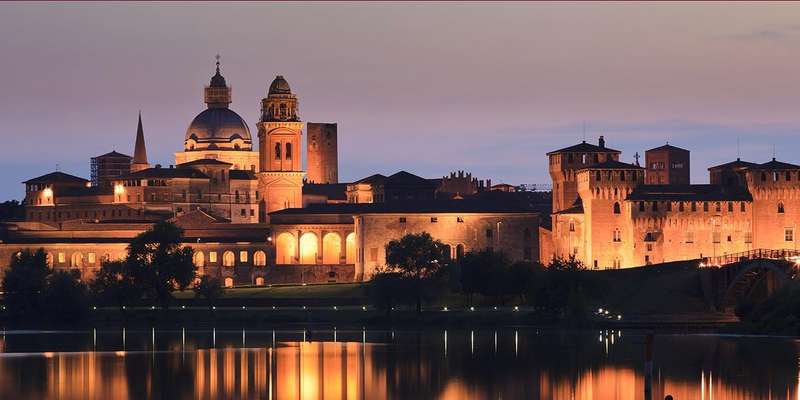- Home
- Useful Tips
- Best ways to appreciate...
Standing bewildered in Mantua's Palazzo Ducale, countless visitors overlook the city's breathtaking fresco cycles while fixating on crowded highlights. Recent cultural tourism data shows 68% of Renaissance art enthusiasts leave Mantua without properly experiencing its UNESCO-listed masterpieces by Pisanello and Mantegna. The frustration is palpable – these fragile artworks demand careful lighting conditions and viewing angles most independent travelers miss. Unlike Florence's well-marked attractions, Mantua's greatest treasures hide in plain sight, their narratives locked without proper context. Morning glare washes out Giulio Romano's delicate hues in the Palazzo Te, while afternoon shadows obscure the Camera degli Sposi's playful details. This isn't just about missing pretty paintings; it's forfeiting a direct conversation with the Renaissance minds who transformed Western art.


Decoding Mantua's fresco timeline – which cycles deserve priority?
Mantua's fresco wealth spans three centuries, making strategic viewing essential. The 15th-century Camera degli Sposi by Andrea Mantegna represents the absolute must-see, its revolutionary ceiling oculus and courtly scenes marking the dawn of Renaissance illusionism. Contrast this with Giulio Romano's 16th-century Sala dei Giganti in Palazzo Te, where crashing titans demonstrate Mannerism's dramatic excess. Few realize Pisanello's unfinished Arthurian cycle in Palazzo Ducale predates both, offering a rare glimpse of Gothic transitioning to Renaissance. Budget two hours for Mantegna, ninety minutes for Romano, and thirty for Pisanello. Local art historians suggest visiting in reverse chronological order – starting with Romano's theatricality makes Mantegna's precision even more astonishing. Morning light favors the Camera degli Sposi's east-facing windows, while Palazzo Te's western orientation shines post-lunch.
Local tricks for crowd-free fresco viewing
Mantua's custodians share whispered strategies for intimate encounters with these fragile masterworks. Target the 8:30 AM Palazzo Ducale slot when school groups haven't arrived yet – the Camera degli Sposi's perspectival magic feels personal with under ten visitors. Wednesday afternoons see fewer cruise excursions at Palazzo Te. For DIY context, download the free 'Affreschi Mantovani' app with 3D reconstructions before visiting. At the Ducale, don't rush past the lesser-known Camera delle Cariatidi; its ruined frescoes reveal fascinating conservation challenges. A little-known municipal rule allows free access to Santa Maria della Vittoria's Sebastiano Ricci frescoes on the first Sunday afternoon monthly. Local guides suggest lingering near restoration notices – conservators often give impromptu explanations about fresco techniques to curious visitors.
Beyond the big three – underrated fresco gems
While crowds cluster around Mantua's famous cycles, astonishing works languish unnoticed. The Diocesan Museum's tiny St. Andrew Chapel contains Mantegna's earliest surviving fresco fragment, showing his Paduan training. Palazzo San Sebastiano houses Francesco Borgani's violent 'Massacre of the Innocents', a Baroque counterpart to Renaissance harmony. For something contemporary, seek out the Teatro Bibiena's 18th-century quadrature ceilings where painted architecture fools even seasoned art historians. Don't miss the faded but historically crucial fragments in Sant'Andrea's sacristy, showing Mantegna's workshop techniques. True connoisseurs venture to suburban Sabbioneta for Correggio-influenced cycles at the Teatro all'Antica. These secondary sites require no reservations and often have English-speaking staff happy to share insights.
Photography secrets for impossible fresco shots
Capturing Mantua's frescoes challenges even professional photographers due to uneven lighting and reflection issues. For the Camera degli Sposi's ceiling, lie directly beneath the oculus with your camera flat against your chest – this mimics Mantegna's intended viewpoint. At Palazzo Te, use your jacket to create a temporary hood around your lens against window glare. Surprisingly, smartphone night mode works better than DSLRs for low-light scenes like Pisanello's fragments. Local photographers swear by circular polarizers to cut chapel reflections, but museum guards may prohibit them. The trick for Romano's Sala dei Giganti? Stand in the exact room center and shoot upward in 0.5x wide-angle mode to emphasize the crashing giants. Remember that flash photography destroys centuries-old pigments – Mantua's museums impose steep fines for violations.



